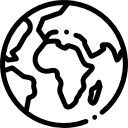$4450
$3560
The Artificial Botanicals Market size is projected to reach US$ 4.09 billion by 2031 from US$ 2.42 billion in 2024. The market is expected to register a CAGR of 7.8% during 2025–2031.
Artificial Botanicals Market Analysis
Artificial botanicals play a vital role in the home décor sector. These products are widely used as a substitute for real plants and flowers due to the growing demand for aesthetic and visually appealing products. Consumers are widely influenced by content on digital platforms, such as home makeover reels on Instagram and Pinterest boards with various home styling ideas and product choices. These platforms widely utilize artificial botanicals in their content due to their appealing and customizable texture and low maintenance, which align well with the busy schedules of consumers. Such factors make them a more popular and suitable alternative for real house plants and flowers.
Artificial Botanicals Market Overview
Artificial botanicals are manufactured to closely replicate the texture, color, scent, and appearance of natural plants and flowers. They are made from high-quality materials such as plastic, silk, latex, and polyester. These materials allow artificial flowers to retain long-lasting color and be more durable, making them suitable for long-term use without seasonal availability. Such factors make them ideal for interior décor, events, weddings, and festive occasions. Artificial botanicals also appeal to consumers who suffer from certain allergies as some house plants can spread pollen, soil-related allergens, or mold, which could pose health risks to the consumers.
Customize Research To Suit Your Requirement
We can optimize and tailor the analysis and scope which is unmet through our standard offerings. This flexibility will help you gain the exact information needed for your business planning and decision making.
Artificial Botanicals Market: Strategic Insights


Shejal
Have a question?
Shejal will walk you through a 15-minute call to present the report’s content and answer all queries if you have any.
 Speak to Analyst
Artificial Botanicals Market Drivers and Opportunities
Speak to Analyst
Artificial Botanicals Market Drivers and Opportunities
Customize Research To Suit Your Requirement
We can optimize and tailor the analysis and scope which is unmet through our standard offerings. This flexibility will help you gain the exact information needed for your business planning and decision making.
Artificial Botanicals Market: Strategic Insights


Shejal
Have a question?
Shejal will walk you through a 15-minute call to present the report’s content and answer all queries if you have any.
 Speak to Analyst
Speak to Analyst
Market Drivers:
Rising Urbanization:
Increasing urbanization and hectic work schedules of consumers drive the demand for artificial botanicals.Growing Interest in Home Décor:
Rising interest in aesthetic home décor items contributes to the market growth.Increasing Influence of Social Media:
The growing influence of social media and digital content on Instagram and TikTok propels market growth.Technological Advancements:
The development of advanced technologies in artificial botanical production makes it more realistic.Growing Sustainability Focus:
The increasing consumer interest in eco-friendly and sustainable alternatives to real plants promotes market expansion.
Market Opportunities:
E-Commerce Expansion:
Expansion in the online retail industry contributes to the market growth owing to the soaring need for convenience.Customizable Offerings:
Artificial botanicals can be customized as per consumer preferences and are not dependent on seasonal availability.Increasing Allergen-Free Concerns:
Rising benefits of artificial botanicals with house pets and allergies contribute to the demand.Integration in Smart Homes:
Artificial botanicals are well-suited for smart home environments owing to their durability and low maintenance.
Artificial Botanicals Market Report Segmentation Analysis
The artificial botanicals market is divided into different segments to give a clearer view of how it works, its growth potential, and the latest trends. Below is the standard segmentation approach used in industry reports:
By Type:
Artificial Flowers:
Artificial flowers closely replicate the original flowers in terms of texture, scent, and appearance.Artificial Trees:
Artificial trees include ficus trees, palm trees, bonsai trees, bamboo trees, and others.Succulents and Cactus:
Succulents and cacti are popular home décor choices for their aesthetic appeal.Others:
Other products include hangings, potted plants and trees, grass and reeds, and others.
By Product Type:
Stems:
Artificial stems are used in artificial flower bouquets and DIY projects.Bush:
Bush artificial botanicals are ideal for filling planters or creating greenery in living spaces.Premade Flowers/Greenery:
These are ready-to-use floral arrangements used for weddings and other festive occasions.Cut Flowers:
These are widely used in festive occasions and mimic freshly cut flowers.Others:
These include garlands, wreaths, artificial fruits, grass, and others.
By Material:
Polyester:
Polyester holds dyes well, which ensures long-lasting colors that are not affected by limited sunlight and are resistant to wear and tear.Paper:
Its lightweight and versatile properties make it a suitable material for the production of artificial botanicals.Nylon:
Nylon is widely preferred due to its flexibility, strength, and smooth texture.Others:
The others segment includes plastic, polystyrene foam, rubber, silk, latex, and other materials.
By Distribution Channel:
Supermarkets and Hypermarkets:
Supermarkets and hypermarkets are popular due to their wide availability and bulk discounts.Specialty Stores:
These stores offer customization and expert help in selecting artificial botanicals. These include florists and other specialty flower stores.Online Retail:
Easy accessibility and the growing need for convenience drive the demand for artificial botanicals from the online retail channel.Others:
These include export markets and trade shows, convenience stores, pop-up stores, and others.
By Geography:
- North America
- Europe
- Asia Pacific
- South and Central America
- Middle East & Africa
Artificial Botanicals Market Report ScopeArtificial Botanicals Market Share Analysis by Geography
The artificial botanicals market in the Asia Pacific is growing at the fastest rate. The rising focus on home décor across the region powers this surge. Emerging markets in South and Central America, the Middle East, and Africa have untapped opportunities for artificial botanicals providers to expand.
The artificial botanicals market growth differs in each region. The demand for premium indulgences continues to grow, positioning artificial botanicals as a favored treat globally, in an evolving consumer landscape. Below is a summary of market share and trends by region:
1. North America
Market Share:
Holds the largest market shareKey Drivers:
- Growing focus on home décor
- Rising influence of social media
- Increasing urbanization
Trends:
Growing demand for artificial botanicals during seasonal holidays across the region
2. Europe
Market Share:
Holds a significant market shareKey Drivers:
- Rising health awareness
- Increasing focus on home aesthetics
- Growing Demand for Customized Solutions
Trends:
Shift in consumer preferences for Scandinavian interior design aesthetics
3. Asia Pacific
Market Share
Fastest-growing region, with a rising market share every yearKey Drivers:
- Favorable climatic conditions
- Growing urbanization
- Increasing disposable income
Trends:
Growing focus on home décor
4. South and Central America
Market Share:
A growing market with rapid progressKey Drivers:
- Expanding online retail
- Growing popularity of house plants
Trends:
Increasing awareness of the health benefits of artificial botanicals
5. Middle East and Africa
Market Share:
Although small, it is growing quicklyKey Drivers:
- Growing urbanization
- Harsh climatic conditions
Trends:
Increased social media influence
Artificial Botanicals Market Players Density: Understanding Its Impact on Business Dynamics
High Market Density and Competition
Competition is intense due to the presence of established players such as The Artificial Plants Shop, Sinleen Artificial Plants, Evergreen Trees & Shrubs Ltd, Afloral, Diane James Designs Inc, The Faux Flower Co, Everplant, Lotus Imports Ltd, Floralsilk Ltd, Beliani, Next Retail Ltd, Les Plantes d'Intérieur Véronneau Inc, SilkPlantsDirect, Jamali Garden, and Trustfloral.
This high level of competition urges companies to stand out by offering:
- Diverse product offering
- Sustainable and ethical sourcing
- Competitive pricing models
- Strong customer support and easy integration
Opportunities and Strategic Moves
- Focusing on research and development activities to distinguish themselves in the market
- Expanding global footprint and capabilities through acquisitions of value-added confectionery brands
- Expanding product portfolio with the launch of sustainable products
Major Companies operating in the Artificial Botanicals Market are:
- The Artificial Plants Shop
- Sinleen Artificial Plants
- Evergreen Trees & Shrubs Ltd
- Afloral
- Diane James Designs Inc
- The Faux Flower Co,
- Everplant
- Lotus Imports Ltd
- Floralsilk Ltd
- Beliani
Disclaimer: The companies listed above are not ranked in any particular order.
Other companies analyzed during the course of research:
- Next Retail Ltd
- Les Plantes d'Intérieur Véronneau Inc
- SilkPlantsDirect
- Jamali Garden
- Trustfloral
- Treelocate
- FeelReal
- Autograph Foliages
- Jamali Garden
- Nearly Natural Inc
Artificial Botanicals Market News and Recent Developments
RTfact Flowers – Production Capacity Expansion
RTfact Flowers launched a new showroom in Weybridge, near Brooklands retail centre, featuring 2,000 sq ft of displays, faux trees, greenery, and interior accessories, replacing its 18-year-old Claygate location.Röko – Mergers and Acquisitions
Röko acquired the majority of shares in Silk-Ka, a leading European company in the design and distribution of artificial flowers and plants, employing 30 people in Hengelo, Netherlands.
Artificial Botanicals Market Report Coverage and Deliverables
The "Artificial Botanicals Market Size and Forecast (2021–2031)" report provides a detailed analysis of the market covering the following areas:
- Artificial botanicals market size and forecast at global, regional, and country levels for all the key market segments covered under the scope
- Artificial botanicals market trends, as well as market dynamics such as drivers, restraints, and key opportunities
- Detailed Porter's five forces and SWOT analysis
- Artificial botanicals market analysis covering key market trends, global and regional framework, major players, regulations, and recent market developments
- Industry landscape and competition analysis covering market concentration, heat map analysis, prominent players, and recent developments for the artificial botanicals market
- Detailed company profiles

Report Coverage
Revenue forecast, Company Analysis, Industry landscape, Growth factors, and Trends

Segment Covered
This text is related
to segments covered.

Regional Scope
North America, Europe, Asia Pacific, Middle East & Africa, South & Central America

Country Scope
This text is related
to country scope.
Frequently Asked Questions
Rapid urbanization and increasing focus on home décor drive the artificial botanicals market growth.
The Artificial Plants Shop, Sinleen Artificial Plants, Evergreen Trees & Shrubs Ltd, Afloral, Diane James Designs Inc, The Faux Flower Co, Everplant, Lotus Imports Ltd, Floralsilk Ltd, Beliani, Next Retail Ltd, Les Plantes d'Intérieur Véronneau Inc, SilkPlantsDirect, Jamali Garden, and Trustfloral are among the key players operating in the market.
The growing focus on sustainability and increasing social media influence toward aesthetic home décor solutions are key future trends influencing the market.
North America dominated the market with the largest share in 2024.
The market size is projected to reach US$ 4.09 billion by 2031.
The List of Companies - Artificial Botanicals Market
- The Artificial Plants Shop
- Sinleen Artificial Plants
- Evergreen Trees & Shrubs Ltd
- Afloral
- Diane James Designs Inc
- The Faux Flower Co
- Everplant
- Lotus Imports Ltd
- Floralsilk Ltd
- Beliani
- Next Retail Ltd
- Les Plantes d'Intérieur Véronneau Inc
- SilkPlantsDirect
- Jamali Garden
- Trustfloral
The Insight Partners performs research in 4 major stages: Data Collection & Secondary Research, Primary Research, Data Analysis and Data Triangulation & Final Review.
- Data Collection and Secondary Research:
As a market research and consulting firm operating from a decade, we have published many reports and advised several clients across the globe. First step for any study will start with an assessment of currently available data and insights from existing reports. Further, historical and current market information is collected from Investor Presentations, Annual Reports, SEC Filings, etc., and other information related to company’s performance and market positioning are gathered from Paid Databases (Factiva, Hoovers, and Reuters) and various other publications available in public domain.
Several associations trade associates, technical forums, institutes, societies and organizations are accessed to gain technical as well as market related insights through their publications such as research papers, blogs and press releases related to the studies are referred to get cues about the market. Further, white papers, journals, magazines, and other news articles published in the last 3 years are scrutinized and analyzed to understand the current market trends.
- Primary Research:
The primarily interview analysis comprise of data obtained from industry participants interview and answers to survey questions gathered by in-house primary team.
For primary research, interviews are conducted with industry experts/CEOs/Marketing Managers/Sales Managers/VPs/Subject Matter Experts from both demand and supply side to get a 360-degree view of the market. The primary team conducts several interviews based on the complexity of the markets to understand the various market trends and dynamics which makes research more credible and precise.
A typical research interview fulfils the following functions:
- Provides first-hand information on the market size, market trends, growth trends, competitive landscape, and outlook
- Validates and strengthens in-house secondary research findings
- Develops the analysis team’s expertise and market understanding
Primary research involves email interactions and telephone interviews for each market, category, segment, and sub-segment across geographies. The participants who typically take part in such a process include, but are not limited to:
- Industry participants: VPs, business development managers, market intelligence managers and national sales managers
- Outside experts: Valuation experts, research analysts and key opinion leaders specializing in the electronics and semiconductor industry.
Below is the breakup of our primary respondents by company, designation, and region:

Once we receive the confirmation from primary research sources or primary respondents, we finalize the base year market estimation and forecast the data as per the macroeconomic and microeconomic factors assessed during data collection.
- Data Analysis:
Once data is validated through both secondary as well as primary respondents, we finalize the market estimations by hypothesis formulation and factor analysis at regional and country level.
- 3.1 Macro-Economic Factor Analysis:
We analyse macroeconomic indicators such the gross domestic product (GDP), increase in the demand for goods and services across industries, technological advancement, regional economic growth, governmental policies, the influence of COVID-19, PEST analysis, and other aspects. This analysis aids in setting benchmarks for various nations/regions and approximating market splits. Additionally, the general trend of the aforementioned components aid in determining the market's development possibilities.
- 3.2 Country Level Data:
Various factors that are especially aligned to the country are taken into account to determine the market size for a certain area and country, including the presence of vendors, such as headquarters and offices, the country's GDP, demand patterns, and industry growth. To comprehend the market dynamics for the nation, a number of growth variables, inhibitors, application areas, and current market trends are researched. The aforementioned elements aid in determining the country's overall market's growth potential.
- 3.3 Company Profile:
The “Table of Contents” is formulated by listing and analyzing more than 25 - 30 companies operating in the market ecosystem across geographies. However, we profile only 10 companies as a standard practice in our syndicate reports. These 10 companies comprise leading, emerging, and regional players. Nonetheless, our analysis is not restricted to the 10 listed companies, we also analyze other companies present in the market to develop a holistic view and understand the prevailing trends. The “Company Profiles” section in the report covers key facts, business description, products & services, financial information, SWOT analysis, and key developments. The financial information presented is extracted from the annual reports and official documents of the publicly listed companies. Upon collecting the information for the sections of respective companies, we verify them via various primary sources and then compile the data in respective company profiles. The company level information helps us in deriving the base number as well as in forecasting the market size.
- 3.4 Developing Base Number:
Aggregation of sales statistics (2020-2022) and macro-economic factor, and other secondary and primary research insights are utilized to arrive at base number and related market shares for 2022. The data gaps are identified in this step and relevant market data is analyzed, collected from paid primary interviews or databases. On finalizing the base year market size, forecasts are developed on the basis of macro-economic, industry and market growth factors and company level analysis.
- Data Triangulation and Final Review:
The market findings and base year market size calculations are validated from supply as well as demand side. Demand side validations are based on macro-economic factor analysis and benchmarks for respective regions and countries. In case of supply side validations, revenues of major companies are estimated (in case not available) based on industry benchmark, approximate number of employees, product portfolio, and primary interviews revenues are gathered. Further revenue from target product/service segment is assessed to avoid overshooting of market statistics. In case of heavy deviations between supply and demand side values, all thes steps are repeated to achieve synchronization.
We follow an iterative model, wherein we share our research findings with Subject Matter Experts (SME’s) and Key Opinion Leaders (KOLs) until consensus view of the market is not formulated – this model negates any drastic deviation in the opinions of experts. Only validated and universally acceptable research findings are quoted in our reports.
We have important check points that we use to validate our research findings – which we call – data triangulation, where we validate the information, we generate from secondary sources with primary interviews and then we re-validate with our internal data bases and Subject matter experts. This comprehensive model enables us to deliver high quality, reliable data in shortest possible time.
Trends and growth analysis reports related to Artificial Botanicals Market

Sep 2025
Artificial Botanicals Market
Size and Forecast (2021 - 2031), Global and Regional Share, Trend, and Growth Opportunity Analysis Report Coverage: By Type (Artificial Flowers [Rose, Marigold, Sunflower, Tulip, Gerbera, Mixed, and Other Artificial Flowers], Artificial Trees [Ficus Tree, Palm Tree, Bonsai Tree, Bamboo Tree, and Other Artificial Trees], Succulents and Cactus, and Others), Product Type (Stems, Bush, Premade Flowers or Greenery, Cut Flowers, and Others), Material (Polyester, Paper, Nylon, and Others), Distribution Channel (Supermarkets and Hypermarkets, Specialty Stores, Online Retail, and Others), and Geography

Sep 2025
Hospitality Personal Care Products Market
Size and Forecast (2021 - 2031), Global and Regional Share, Trend, and Growth Opportunity Analysis Report Coverage: By Product Type (Creams and Lotions, Shampoos and Conditioners, Soap Bars and Shower Gels, Handwash, Shower Caps, Oral Care Products, Sewing Kits, Dispensers, and Others) and Application (Hotels and Motels, Resorts and Spas, and Hammams)

Sep 2025
Hospitality Textile Products Market
Size and Forecast (2021 - 2031), Global and Regional Share, Trend, and Growth Opportunity Analysis Report Coverage: By Product Type (Bed Sheet [Flat Sheets, Fitted Sheets, Decorative Top Sheets, and Baby Crib Sheets], Pillowcases and Protectors, Duvet Covers, Bathroom Textiles [Bath and Pool Towels, Hand Towels, Bathmats and Rugs, and Bathrobes] Blankets Duvets and Comforters [Synthetic and Natural Fill], Pillows, Mattress Pads and Encasements, Kitchen Towels, and Tablecloths), and Application (Hotels and Motels, Resorts, and Spas and Hammams)

Sep 2025
Household Fans Market
Size and Forecast (2021 - 2031), Global and Regional Share, Trend, and Growth Opportunity Analysis Report Coverage: By Product Type (Ceiling Fan, Pedestal Fan, Table Fan, Exhaust Fan, Wall Fan, and Others), Distribution Channel (Supermarkets and Hypermarkets, Specialty Stores, Online Retail, and Others), and Geography

Sep 2025
Nutraceuticals Market
Size and Forecast (2021 - 2031), Global and Regional Share, Trend, and Growth Opportunity Analysis Report Coverage: By Type [Functional Foods, Functional Beverages, and Dietary Supplements [General Wellness, Sports Nutrition, Weight Management, Immune Health, and Others)], Distribution Channel (Supermarkets and Hypermarkets, Specialty Stores, Online Retail, Convenience Stores, and Others), and Geography

Sep 2025
Nicotine Pouches Market
Size and Forecasts (2020 - 2030), Global and Regional Share, Trend, and Growth Opportunity Analysis By Strength (Less than 6 mg/g, 6 mg/g to 12 mg/g, and More than 12 mg/g), Flavor [Original/Plain, and Flavored (Mint, Berry, Citrus, Fruity, Others)], Distribution Channel (Supermarkets and Hypermarkets, Convenience Stores, Online Retail, and Others)